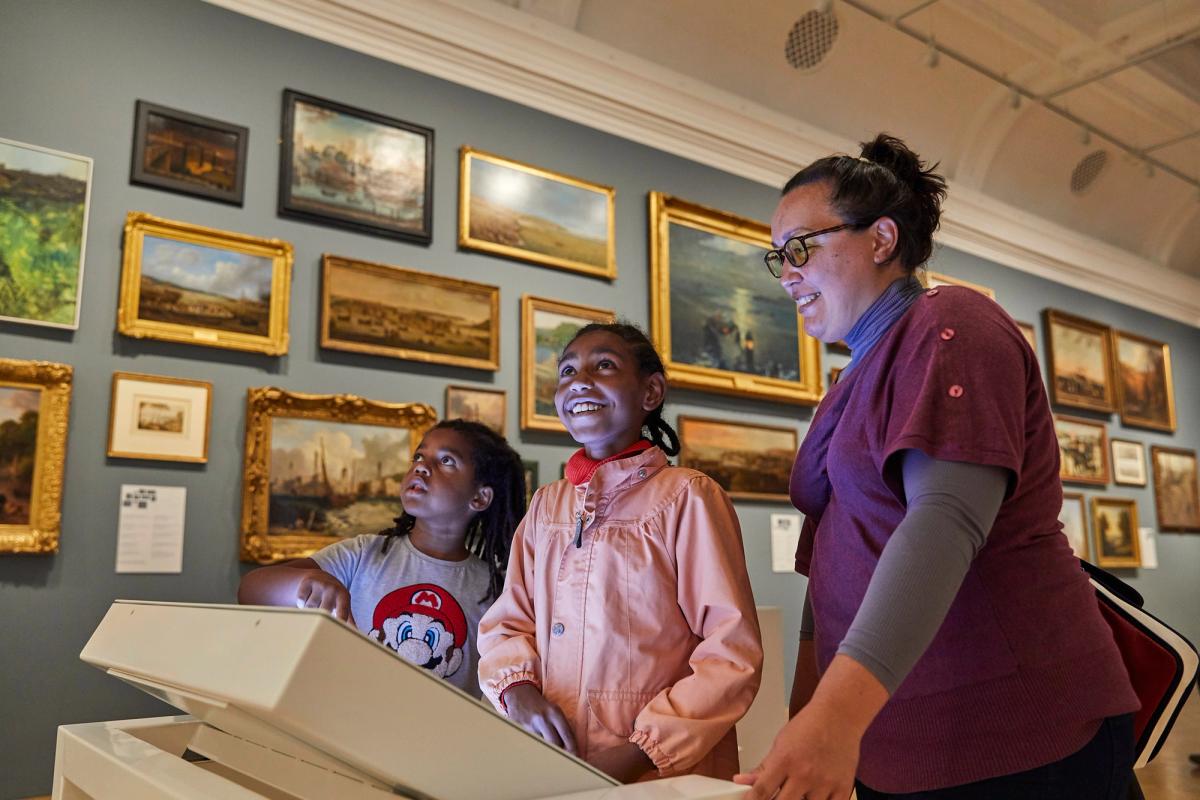A report made public by the UK charity Art Fund today has shone new light on the way socio-economic background and location are impacting on pupils' access to museums.
The research, which was undertaken by analytics group YouGov, looked at data relating to 1,000 children aged 6-15 years. It found that 52% of less privileged pupils have visited a museum in the past year, compared with 70% of those with more advantaged upbringings. These socio-economic categories were defined as between ABC1 and C2DE, grades within the generic National Readership Survey (NRS) scale that are based on the occupation of a household's chief earner. ABC1 and C2DE are often used to refer to middle and working class respectively.
Another factor affecting access is geographical location, with pupils from London far more likely to have visited a museum in the past 12 months than those in other regions. The report found that 75% of pupils in the capital had attended over this time compared with 60% in northern England or Scotland and 57% in the Midlands and Wales.
Speaking to The Art Newspaper about what lies behind this inequity, Jenny Waldman, the director of the Art Fund, said: "My sense is that this really comes down to cost and time. Our research in 2022 with 1,000 teachers from UK schools where pupils were experiencing above-average levels of disadvantage told us these were the main barriers to school visits. The cost of transport to get to museums [for example] can be prohibitive and that is particularly the case in locations where there are fewer museums and transport links."
Indeed, those involved in the new study emphasise the importance of schools in getting pupils through museum doors, but separate data gathered for Art Fund by survey app Teacher Tapp suggests that this window for access is narrowing. Of 9,000 teachers surveyed, 36% reported they are taking pupils to these institutions less often than before the Covid-19 pandemic.
To try to counter this decline—and grow the connection between schools and cultural destinations—Art Fund has released a Teacher Art Pass, which offers educators reduced cost, and often free, access to museums, historical houses and more across the UK. Early responses have been positive; following a trial involving 1,000 teachers, 85% said that the pass had benefited their teaching practice; the aim is that this will encourage a growing number of visits with pupils, too.
In a statement Waldman said: "We want to support teachers, who play such a vital role in pupils’ lives, and we know that visiting museums can also help improve their own wellbeing. By connecting more teachers with museums and galleries, we can boost all children’s access to cultural experiences, inspiring teachers and their pupils and improving education outcomes for all.”
Adam Creen, the head of maths at a secondary school in Surrey, UK, meanwhile said: “I got my Teacher Art Pass around four months ago and have since visited a wide range of museums and galleries across the country. These trips have been a great reminder of the benefits of cultural spaces not just for my wellbeing, but also as a source of inspiration.
"I’ve found admiring art created using mathematical patterns such as [work by the Italian mathematician] Fibonacci or discovering historical figures that have used the art of maths to create some of the world’s most ground-breaking inventions really beneficial. These works of art and objects help bring to life how maths is used in the real world, helping to engage pupils in the value of mathematical skills."
Speaking to The Art Newspaper, Waldman added that more assistance from government was needed to complement these initiatives: "Many museums and schools, both time poor and under resourced, need more support in how to connect with each other and make the process of visiting easier. Given the evidence that arts, creative learning and cultural visits enrich a young person’s educational experience, we would like to see this formally built into the curriculum."
UPDATE 13/09/2023: This article was amended on 13 September to include additional quotes from Jenny Waldman


